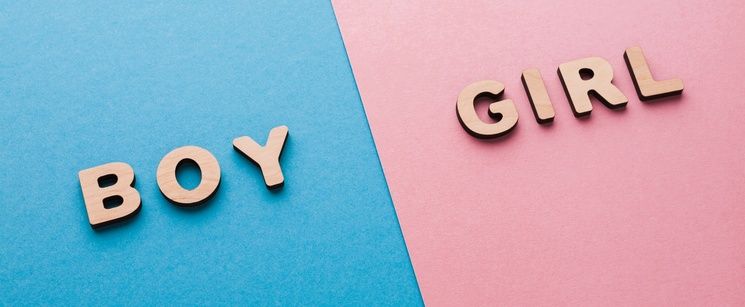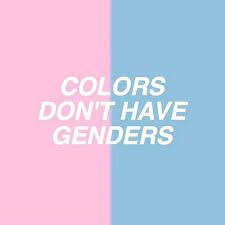Stop Gender-Specific Colors
Jul 20, 2019 • 39 views
If pink wears blue, Pink is a tomboy.
If blue wears pink, Blue is gay.
Pink is told to shave the body hair.
Blue is told to keep the body hair.
Pink cries. Pink is emotional.
Blue cries. Blue is Pink.
Pink is told to be cute.
Blue is told to be manly.
Pink surrounded by Blues. Pink is a slut.
Blue surrounded by Pinks. Blue is confident.
Who gets to decide that pink is for girls and blue is for boys and why?

To give you guys a little shock, there is a reason why pink is for girls and blue is for boys. To surprise you further, earlier it was actually opposite. Pink was for boys and blue was for girls (US-based concepts).
Inthe late 1800s, male and female tots used to wear frilly white dresses for practical reasons like toilet training was a lot easier in a dress in diapers since the fashion of pants in those days weren’t easy for kids to use and moreover it took kids much longer to grow out of a dress than a pair of pants, so parents didn’t have to spend much money on their kid’s clothing. Pastel baby clothes were introduced in the mid-19th century, but according to Jo B. Paoletti, the author of Pink and Blue: Telling the Girls From the Boys in America, the colors were not at all gender-specific at first.
Ladies' Home Journal article in June 1918 said, "The generally accepted rule is pink for the boys, and blue for the girls. The reason is that pink, being a more decided and stronger color, is more suitable for the boy, while blue, which is more delicate and dainty, is prettier for the girl." Other sources said blue was flattering for blonds, pink for brunettes; or blue was for blue-eyed babies, pink for brown-eyed babies, according to Paoletti.
In 1927,Time magazine printed a chart showing sex-appropriate colors for girls and boys according to leading U.S. stores. In Boston, Filene's told parents to dress boys in pink. So did Best & Co. in New York City, Halle's in Cleveland and Marshall Field in Chicago. (Source: jezebel.com)
In the 1940s, the concept of Ideal American Family took shape which said that men were expected to join the workforce whereas women were expected to be the housewives (What even!?) and that’s how manufacturers started to make more feminine products in pink and henceforth pink was associated with femininity. But that wasn't the end of the story. It was in the 1980s when an actual line was drawn between pink and blue because parents could actually find out the gender of their child before the child was born and thus parents can shop for their kid beforehand. And this made the businesses realize that pink and blue can actually make their business flourish with green.

So, even though we hated this concept for so long, we never knew that there was a reason behind this (I still don’t consider this as a valid reason though). Anyway, nowadays, the best example of this concept is how kinder joy has separated their products for girls and boys as pink and blue. And how can I forget that the good news of an expected baby boy or a baby girl is given through blue and pink indications? Well, this concept has definitely helped a lot of businesses to mint a good chunk of money and has turned into a good marketing strategy but I still think that making colors gender-specific isn’t a cool thing.
Why shouldn’t we make a strategy to love all shapes and colors? Why not love brown and red and every color which has its own beauty and adds an extra definition to anything and everything that surrounds us?
